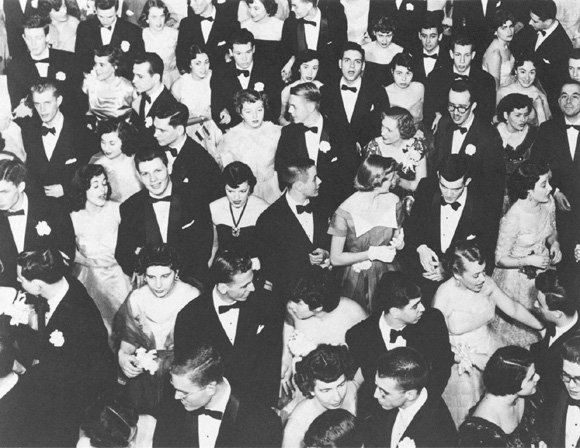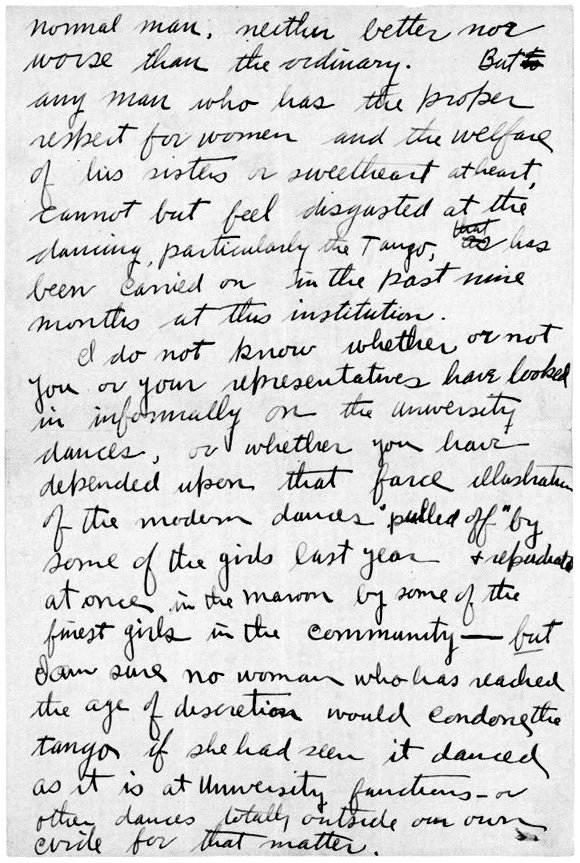Dances and Socials
Although the mock conference was a success, the banquet and social which followed made such an impression that the students decided the following year to drop the seminar and make Washington's birthday a major social event. The Washington Ball, as they called it, brought students, faculty, and administrators (President Harper and Dean Judson included) together on the dance floor where they performed the waltz, twostep, polka, schottische, and a dozen other dances. Each year brought improvements, and the Washington Prom established itself as an impressive campus tradition. In 1938, for instance, the Prom's elaborate decorations included a re-creation of Washington's stately Mount Vernon home.
Other events vied for positions on the social calendar, the Interfraternity Ball, the Homecoming Dance, and the Interclub Hop among them. Big bands from Duke Ellington and Johnny Lunsford to Benny Goodman were drawn to campus to entertain huge crowds at the dances. With the proliferation of fraternities, the Interfraternity Ball grew in status and rivaled the Washington Prom for social cachet.
Over time, changes in the University brought a different tone to these social events. The core of social life had been the University's undergraduates, specifically the junior class which organized the Washington Prom. But the increasing proportion of graduate students made successful campuswide social events a more difficult task for the smaller group of undergraduates. Also, Hutchins's decision to ban fraternity membership for all first-and second-year students and to organize a Student Union to centralize extracurricular activities diverted student interest away from the major social functions.
The Interfraternity Ball managed to continue to thrive under these conditions, but the Washington Prom, confronted by high costs and low attendance, could not. By the late 1960s and early 1970s, students were more interested in utilizing their limited resources for political activism rather than for what many considered frivolous balls. At this point the Student Union had little choice but to make the 1970 Washington Prom the sixty-seventh and last.
While the traditional dances encountered difficulties, other social events emerged for brief periods. The Beaux Arts Ball, a costume event, was a popular finale to the Festival of the Arts, an event created in 1956 by faculty and students to celebrate various art forms on campus. In the same year, the council of women's organizations inaugurated the Golddiggers Ball, an event which permitted women to invite men.
A highly untraditional event, the Lascivious Costume Ball (LCB), began in February 1970, the same time slot previously occupied by the Washington Prom. Until its demise in 1987, the LCB attracted student interest by placing considerably less emphasis on costume, which often amounted to little more than strategically located frisbees and paper cups, and much more on the lascivious. As one participant observed, "It's as if this is the one time of the year that the University people get to exercise their libido, and they're all doing it right now."


